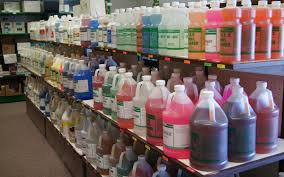The household cleaning products industry is a fast-growing industry. According to a report conducted by Global Industry Analysts, the global household cleaning products market is predicted to grow by $20.2 billion US dollars, growing at a compound annual growth rate (CAGR) of 4.8% by the year 2025.
Household cleaning products include everything from toilet cleaners, dishwashing products, and surface cleaners to cleaning agents, bleach, and laundry detergents. Cleaning products play an essential role in maintaining household hygiene and health.
There are many factors and trends contributing to the growth of the household cleaning products market. Growing health and hygienic concerns among individuals have led to the increasing demand for household cleaning products. There’s also been continuous product innovation in recent years, with an increasing number of companies extending their product portfolio, which has revolutionised the market.
Eco-friendly and sustainable household products are also driving the market as consumers turn to household cleaning products that contain ‘natural’ ingredients, avoid the use of harmful chemicals, and generate less carbon dioxide during manufacturing and use. High demand for premium household products in developed economies such as the UK, USA, Canada, and Japan has also boosted the market in recent years.
Rapid urbanisation, changing lifestyles, and increasing purchasing power in developing regions have also fuelled the demand for household cleaning products.
Manufacturers of homecare and household cleaning products face numerous challenges. Due to intensifying competition in the market, companies are faced with huge pressure on prices and margins. Despite intense competition, manufacturers need to ensure the delivery of high-quality products. Other challenges across the sector include ensuring consumer safety, offering convenience and ease of use, the demand for sustainably produced goods, reducing production waste, and soaring commodity costs.
To counter these challenges, many manufacturers are looking at innovative ways to cut costs to boost productivity and profits. While some manufacturers have raised prices, another route taken by many manufacturers is to launch higher-end premium products.
But when you have adequate training on how to manipulate recipes when the cost of raw materials is high, you do not have problems bringing down product cost and still achieve quality improvement. and price stabilisation. For details. visit www.investmentlight.com/liquidsoap
